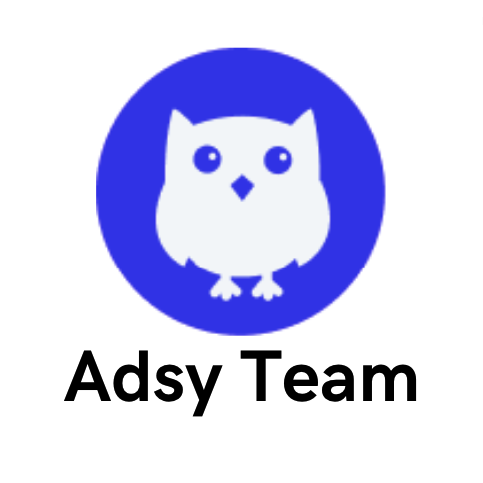B2B Copywriting: Everything You Need to Know (With Examples)

Whenever people explain B2B writing meaning to new writers, there’s much ado about data and logic. But is that all there is to it?
For sure, you need these two, but if you really want to nail B2B copy, you have got to bring more to the table.
After all, if everyone else is doing the same thing, then how can you stand out? And if there’s one thing we know for sure, it is the fact that businesses desperately want to seem different, be different. And content is essential for that.
Your copywriting needs to be better than what others post to get new clients on board with whatever you are offering. But how do you pull this off? That’s exactly what we want you to know. In this guide, we’ll go back to the basics and build up from there.
So, that means we start with the answer to the question — what is B2B content writing? Next, we move on to the meat — the best B2B copy examples and our most effective tips.
Why is B2B copywriting special?
Writing for B2B is not the same as your regular marketing copy. That’s because, as a writer, you're creating content for businesses that will go on to offer their services or products to other businesses.
This means your copy has to be more persuasive and laced with lots of facts and verifiable data. Think case studies, whitepapers, in-depth guides, etc.
This is the kind of content where it's all about relying on logic, dry facts, and ROI, and not just stirring feelings.
That's not to say that your B2B content can’t resonate emotionally with your audience — not at all. But the focus is different — you can’t rely on quick emotional purchases because the sales cycle is much more complex and longer.
On top of that, with B2B writing, you might be “talking” to several people with the same content pieces. Ideally, you have to persuade both decision-makers (i.e., managers) and actual users (i.e., anyone in the company who will work with your solution).
When done well, you could be among those B2B brands that see better conversion rates and longer client retention. Throw a couple of strategic guest posting campaigns, and you could be unstoppable.
TL;DR: What is B2B writing? This is a type of writing that’s targeted at businesses, not individual buyers.
B2B vs. B2C content marketing: What is the difference between them?
Comparing B2B and B2C is like comparing apples and oranges. They may be both fruit (or, in this case, content marketing), but they are tailored to two different types of people.
Of course, each business and niche is unique, so both B2C and B2B content strategies can be similar. But overall, they have absolutely different tendencies. What are those? Let’s break them down below:
- Channels. Typically, people working with B2C target Instagram, TikTok, and YouTube. It’s more about those fun and casual channels. At the same time, your average B2B writer will focus on LinkedIn, Reddit, newsletters, etc. You get the drift.
- Tone. Your B2C content is mostly going to be conversational and emotional. Yet, when it comes to B2B, you will often need to be more professional and logical. Especially since you'll be dealing with data and research.
But again, these are just averages — each case is unique.
- Sales cycles. The B2C sales cycle is normally very short, and impulsive buys are not uncommon. That’s why even a one-off trigger topic can lead to a stream of sales. But when marketing to businesses, the story is absolutely different.
With B2B, the sales cycle is often stretched out over a longer period of time. The process from the first touch until the closed deal can take months or even years. So, content here is designed to catch interest and build trust over time.
- Content types and formats. Think short-form videos (Reels, YouTube shorts, or TikTok posts) for B2C. At the same time, webinars, LinkedIn posts, industry events, technical reports, research, and so on work better for B2B.
- Decision-making process. The B2C decision-making process involves just one person or a family. You can’t say the same about B2B, which involves many more people.
That kind of explains why most B2B content seems almost impersonal compared to B2C, which is more personalized and informal.
This is not to say that B2B content writing is supposed to be some soulless, dry activity — far from it. Most of the time, you still have the same core goal as a B2C writer. You still need humor (when done right), personality, stories, etc. We’ll look at some examples that highlight these and others that don’t.

Types of B2B writers (the good, the bad, and the ugly): How to find a good fit?
Generally, your average copywriter in any B2B niche falls into one of two categories:
- A marketing writer who is focused on promotional and educational content — blogs, white papers, success stories, and so on. The same person may probably be able to whip up a great website or landing page copy, too.
- Then, there is the other one, who is more on the technical side and deals with product documentation, manuals, release notes, etc.
Usually, these are so distinct that you will need a different specialist with a unique copywriting skillset for each task. But no matter what their thing is, they generally represent one of the following types.
Note: No offense here — we might exaggerate a bit for the sake of showing the difference. And we’re pretty sure you’re in the first group:)
The good: Well, just good
This is the kind of writer who takes their time to do real audience research. They have a unique way of blending storytelling with selling in such a way that you don’t feel sold to.
This is mainly thanks to the fact that they can translate hard data and industry jargon into plain English. It’s one of those cases where they make their readers feel smart, not showing off how smart they are.
A good B2B writer knows to simplify complex technical subjects and do so with a distinct voice. They write in a way that feels natural and that is easy to remember and understand. That’s why no one falls asleep reading their copies.
The bad: “Wordy” writer
You definitely know this one. They spend way too much time making sure that every sentence is just right. And by that, they mean it has lots of high-sounding nonsense words.
It gets even worse when they have a new favorite pun under their belt. You’ll have to put up with it making an appearance in every other sentence.
Sometimes, all of us get too wordy or overly “poetic.” But when you do this too often, your reader simply gets overwhelmed.
The ugly: Lazy template fellow
This one goes further than the “wordy” writer. This one favors a writing style that’s limiting and follows the same strict style every single time.
On top of that, they add a stiff, formal tone that sucks the life out of the content. This ends up making their copy not just hard to engage with but also hard to even read.
In worse cases, it can give off the impression that they don’t do enough research and simply fill in the blanks in a template. If you ever read a B2B copy that gives off this weird robotic vibe, you are dealing with the template fellow.
So, how do you find a good fit for you?
This depends on what your needs are. If you're looking to create informative blog pieces and marketing material, you will need a marketing B2B writer.
But if you want to focus on documentation for your software, then you will need a tech writer.
Yet, no matter what your needs are, you definitely want to look for a person who knows how to make complex things sound simple. This is a sure sign of a really good writer.
The truth, though, is that finding such a person can be a bit tough, depending on your niche. Still, while copywriting for B2B isn’t easy, there are more and more specialists who get really good at this. So, it’s just a matter of time until you find one for your business.
5 examples of B2B copywriting that you can learn from
Now is our favorite moment — time to get some inspiration. Below, we’ve listed some of our favorite B2B writing examples to give you an idea of what you could try.
1. Midwich (a promotional campaign that uses tech right)
If you had to promote your tech blog, what would you do? Write some social media posts? Run ads? Pay an influencer? Drown your target audience in a sea of emails? We all know that B2B emails have great ROI when done well, but does that mean you do the same thing all the time?
For Midwich, a UK-based B2B tech company, the answer was obvious — use tech. They created a QR code for a blog with the topic “Collaborative Technology Solutions.”
Source: LinkedIn
The idea was simple — scanning the QR code would lead to the blog post. It would also provide a practical example of what collaborative technology solutions look like for businesses that adopt such methods. This worked!
Not only did that blog get more than 156 views from QR scans alone within the first week, but people jumped on it. It raised interest in others who were very eager to show the QR codes to other vendors and businesses.
By the time the company shared its strategy on LinkedIn, it went viral and got thousands of impressions. After this, they have continued to use QR codes in their marketing campaigns and fundraising activities.
Source: LinkedIn
So, what do we learn from this?
This is one of those B2B writing examples that shows how to step outside of the box even when doing promotional marketing.
Also, they perfectly illustrate how a tech company can be creative in its copywriting. All this while showing a practical example of how their service could solve real-life problems for businesses.
This time, it’s not the content alone doing the heavy lifting. Their smart marketing idea provided tons of engagement and attention. That’s why people reference this case until today.
2. Hotjar (copywriting that piques curiosity)
This is probably one of the most popular B2B copywriting examples out there. Hotjar has mastered the art of grabbing its audience's attention right from the get-go. Their headlines make you curious, and the promise of valuable information draws you in.
For example, the landing page on their website promises to tell you everything you ever wanted to know about your website, but your analytics never told you. Sounds very intriguing, right?
Source: Hotjar
If you're a business owner or a marketer, chances are you already use some sort of analytics tool. And most likely, one of your biggest goals is to improve your website's online performance.
So, obviously, you're going to be curious to know what your analytics don't reveal that might be important for your business. This clearly works. Unsurprisingly, Hotjar is used by over a million websites in over 180 countries (according to them).
You also notice that their blog posts feature topics that are value-driven. This is a golden standard for business-to-business content marketing.
Source: Hotjar
The headlines mostly center around pain points that businesses can identify with. At the same time, the copy itself provides handy solutions that work in such scenarios.
So, what do we learn from this?
This type of B2B marketing copywriting highlights the power of curiosity, persuasion, and value. Hotjar understands how to combine the three expertly.
Their headlines spark interest while promising value at the same time. The main lesson any B2B business could learn from them is how to resolve clients’ doubts. Plus, how to promote a product/service without being salesy at all. This is what attraction marketing is all about.
You can see a clear focus on the target audience's pain points, which is an extremely useful approach to content for any company. In fact, this way of dealing with things can help you build authority and a lot of trust with your audience.
3. CB Insights (humor is fine)
Most newsletters that contain industry-specific insights tend to be dry, turning into a real snooze-fest. How else can you talk about data and industry studies, after all? Well, this is where the CB Insights newsletter breaks this pattern and proves us wrong.
Not only are some of the subject lines surprisingly funny, but the content is just as entertaining.
Source: CB Insights Email Campaign Archive
CB Insights has cracked the code for highlighting the latest gist on technology, emerging business, and venture capital without taking themselves too seriously.
The insides of some of this content are sprinkled with fun memes that are relevant to the subject (or even whole newsletters about memes). How about that?
Source: CB Insights Email Campaign Archive
But that doesn’t take away from the relevant data and helpful insights, of course.
Source: CB Insights Email Campaign Archive
In fact, thanks to the humor and easy tone of voice, CB Insights is able to appeal to a broader range of audiences. Some of these include tech enthusiasts, investors, and prospective customers.
So, what do we learn from this?
Humor can be a powerful tool when expertly used. It can help you pull the readers into your content. Plus, it makes it much more memorable and enjoyable for them.
But be careful when you use humor in copywriting for B2B content. It should never be used as clickbait.
Humor in B2B is more like “sprinkles on top” rather than the main dish. Make sure you deliver something valuable and decent. Most importantly, of course, your humor must always be relevant to the topic of your content.
Otherwise, it’s just distasteful and has no place in any type of marketing at all.
4. Apple (be thorough)
Apple is mostly a B2C company, but a lot of its products are used by businesses just as much as by individuals.
An example is their desktop computer, which you can find in offices as well as in homes. Solutions like the Mac Studio are very popular among creatives, video editing companies, and so on.
Besides, some of their products and tools are targeted towards businesses only, such as Business Apple Manager, for example. It was never meant for individual customers.
Source: Apple
So, how do they pull off B2B writing?
Apple is probably hands down one of the best at churning out great content. Whether that is a copy, a presentation, or an attention-grabbing short video.
But then they don’t always take that playful hip personality into all their written pieces. For example, their repair manuals, tech specs, and user guides are very slick.
Normally, you get a no-fluff, professional walkthrough through the components of the product and its capacities.
Source: Apple Support
This way, busy professionals looking to compare the products with others don't have to dig through tons of unnecessary information.
You get the same thing when you check out their user guides. The only difference is that this provides a helpful visual guide to make onboarding easy, while still including all the nitty details of what goes on under the hood.
Source: Apple Support
This approach works best when you have gone past the first and second stages of the sales funnel, cultivated the client’s interest, and built trust. You just need to give them the information they need to make their final purchase decision.
So, what do we learn from this?
There’s a time and a place for everything. A time to be playful (even in B2B) but also a time to get down to the serious business. You want to be able to pick up on what your target audience needs and focus on how you can be a solution.
So, if you ever have to create bare-bones content, try to be as precise as possible. This is often true for B2C businesses as well (just saying).
5. MYOB (make sure your customers know you get it)
People don't like talking (or even thinking) about taxes, and yes, sometimes even businesses fall under the same category. That's because it can be challenging to figure out.
Even enterprises might struggle to manage their finances and make sure that nothing falls through the cracks.
Big companies hire a lot of people for that reason. But for small businesses that are just starting off, it can become a real nightmare. The bigger your business grows, the more help you will need.
MYOB understands this very well and has carved out a niche for itself as the solution to companies struggling to manage their finances. From their landing page, they leave you in no doubt that they are here for businesses like yours.
Source: MYOB
They do everything to show you that they are the go-to company for your financial needs and that they are ready to grow with you at every stage.
How do they manage this?
Thanks to the clear B2B copy. Their landing page isn’t about creative texts or some unseen visuals. No, their website is all about those “clean,” effective messages that their audience expects.
They have a very understandable and quite intuitive UI, where you can see what they have to offer for every type of user.
Source: MYOB
They also offer a lot of content to show how they compare to other similar solutions (mostly their direct competitors). Here, the copy is extremely concise and to the point, which is very good for B2B.
Source: MYOB
Their blog content also features topics that are beneficial to their readers. This way, they are showing that they understand their audience’s pain points and want to help.
Source: MYOB
So, what do we learn from this?
This is one of those typical but good examples of B2B copy. It isn’t super special or creative. But it does its job.
And this is the main point — when it comes to business-to-business, your priority should always be the value. And only when you have this part sorted out can you add your unique touch to it (humor, specific ToV, mascot, etc.).
Let your topics and content show how much you know your target audience. If it doesn’t align with what they need to see, you’ll lose them easily. But when you get it right, your content can be the beginning of lifetime customer-brand relationships.
Okay, so we’ve looked at several great B2B copywriting examples. But now, you might be wondering how you can replicate their success. In reality, it’s not as difficult as you might think if you know what you’re doing. This is what our next section is for.
Tips to make your copywriting for B2B actually effective
And now, the moment you’ve been waiting for. Time to see how to create your own efficient B2B content marketing pieces that others can look up to. Here are some of the B2B copywriting tips you’ll need:
Tip 1: Know your people
It’s enough to assume that everyone in the B2B niche only cares about the ROI and numbers. You’ll need to research your target audience so you can personalize your content to align with their values and interests.
Besides, here is an extremely important detail. Your content will read differently depending on whether it is targeted at the decision-makers versus the end user of your product/service.
This is where your B2B buyer persona will be handy. For this, you can use our detailed template:
Tip 2: Highlight the best things about you
It doesn’t matter how great you are. No one’s going to know if you don’t show/tell them. So, be sure to communicate why your products or services are unique and better than other alternatives.
Even if you don’t create your content in-house, this is the first thing you should tell your B2B copywriting services or freelancers. No matter how good they are at writing, it makes no sense unless they understand why your company is special.
Tip 3: Back up every claim with hard data
Numbers don’t lie. So, every single one of your claims has to be credible. B2B content is hardly a place for “opinions” (unless you are writing a column). But when it comes to business copy, make sure to add as much data and research as possible.
It’s even better if you can become a source of such information. Of course, not all of us can conduct in-depth research, but almost any business has cool stats to share. In the end, this is what gives your claims more credibility and improves people’s trust in your brand.
Tip 4: Clarity over quirkiness
We’ve already seen that some humor is awesome, and there are great use cases for it in B2B. But don’t sacrifice clarity for some laughs. Avoid jokes, riddles, or expressions that no one else but you and your cat knows the meaning of.
When in doubt, just give answers that match the audience’s burning questions without adding any “creative” touch to it. It will be enough. Don’t use humor just for the sake of it — fake wittiness is the worst enemy of any writer.
Source: X
Tip 5: Blend into your niche
You'll always need to match the vibe of your target audience. Selling to beauty business owners and geeky devs has almost nothing in common. So, make sure you actually understand what your people want and what “language” they use.
Besides, don’t try to be too salesy. Most of the time, you would want to concentrate on how your product/service can help businesses instead of focusing on your offerings and specs. If you show how you can solve problems, people will buy from you even without you asking for that.
Use the right jargon and match the “vibe” of your audience. You build trust when you speak as equals (expert to expert).
After all, we all should be helping each other with our solutions instead of just making money and reaching some valuations. This is the key to increasing your sales volume sustainably.
Tip 6: Make peace with making mistakes
You will flop a time or two. It might feel like the end of the world, but it’s not. Instead of panicking, work on becoming better.
Do you feel like your writing is a bit shallow and lazy? Do better research to give you more to work with in your next project. Do you feel like you’ve lost your spark? Take a day to read what others are posting out there and get some inspiration.
The idea is to run a marathon, not a sprint. So, make sure you know how to work on your mistakes.
Conclusion
Well done for making it through to the end of this guide. Now, you can walk anyone through what it takes to be a B2B copy guru. It’s all in the details, as you can see.
To know who your audience is and what their frustrations are all about requires you to be observant.
The
more you know, the easier it is to build a lasting connection that
leads to a long-term relationship. After all, your writing shouldn’t
only reflect your expertise but also your empathy.



